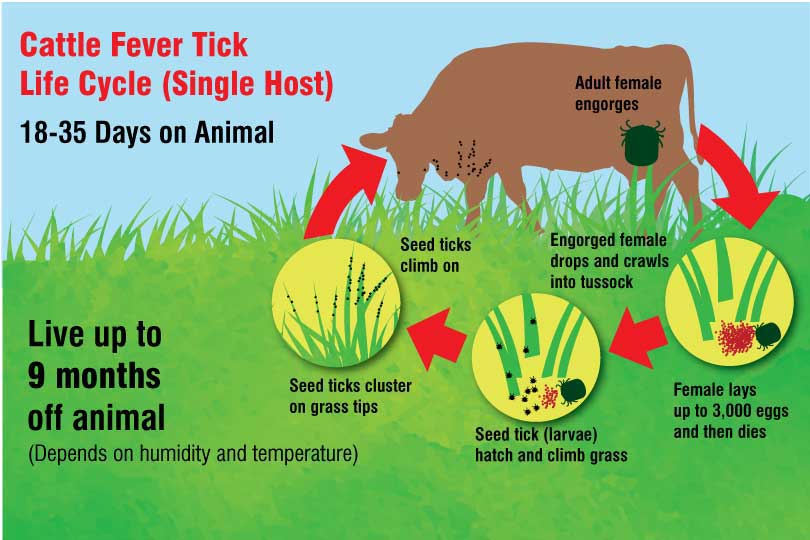By Julie Tomascik
Editor
Ticks, cattle and wildlife are once again at center stage in South Texas as cattle fever is a growing concern for ranchers.
That’s because the cattle fever tick has moved northward more than 100 miles outside of the Permanent Quarantine Zone to Live Oak County.
“Movement of the fever tick that far from the Permanent Quarantine Zone serves as a valuable reminder for Texas ranchers to be ever vigilant in monitoring their cattle for unusual pests or disease and to report suspicious signs or findings,” said T.R. Lansford, DVM and assistant executive director of Animal Health Programs for the Texas Animal Health Commission (TAHC).
Ranches with cattle that trace to the latest infestation are being contacted by TAHC staff to begin the evaluation process and set up eradication protocols if ticks are found.
Movement restrictions are a critical component in stopping the spread of ticks to new areas.
“It is important to understand that, unlike most other livestock diseases, a fever tick quarantine includes not only the infested and exposed animals, but the premises where they are or were located and the surrounding premises,” Lansford said. “Fever ticks are an environmental issue, not just an animal issue.”
Cattle fever ticks can live up to nine months and travel with livestock—horses, cattle or wildlife—from ranch to ranch if they’re not treated with approved products and inspected by trained staff.
Once ticks are on the property, females will lay up to 3,000 eggs. They’ll hatch and make their way onto livestock, mature, then jump off and start the process over again.
This cycle can be as short as 18 days, so timely treatment is essential to break the life cycle.
TAHC incorporated by rule the use of a fever tick vaccine in the Permanent Quarantine Zone last year. Lansford noted the first doses were administered in July and vaccination is underway in all parts of the Permanent Quarantine Zone, certain parts of the temporary preventative quarantine area in Cameron County and the Control Purpose Quarantine areas in Willacy County.
The vaccine and its administration is done at no cost to ranchers, Lansford noted.
Officials also plan to feed white-tailed deer corn treated with ivermectin in February once deer hunting season is closed.
This is approved by the U.S. Food and Drug Administration and can only be done legally by TAHC and U.S. Department of Agriculture personnel.
“The plan is to feed ivermectin-treated corn, if epidemiologically indicated, in infested areas of the Permanent Quarantine Zone and other quarantine areas,” Lansford said.
Ivermectin-treated corn is fed from the end of deer hunting season until no later than 60 days prior to the next deer hunting season, he added.
“As in other species, ivermectin has a withdrawal period of 60 days in deer. Typically, feeding of ivermectin-treated corn stops in late July and early August,” Lansford said.

